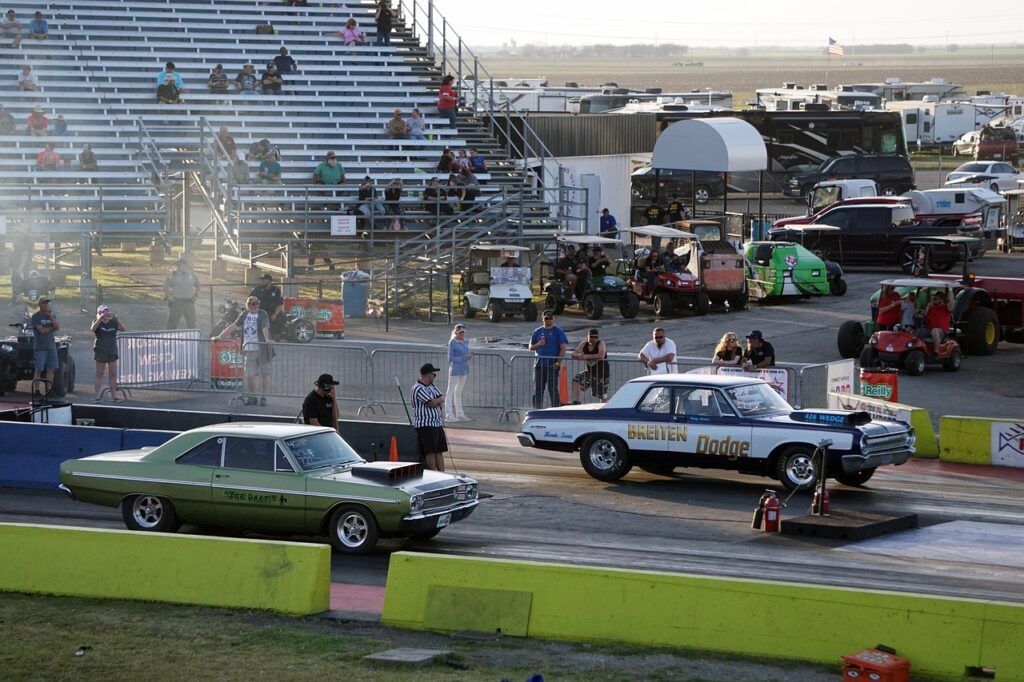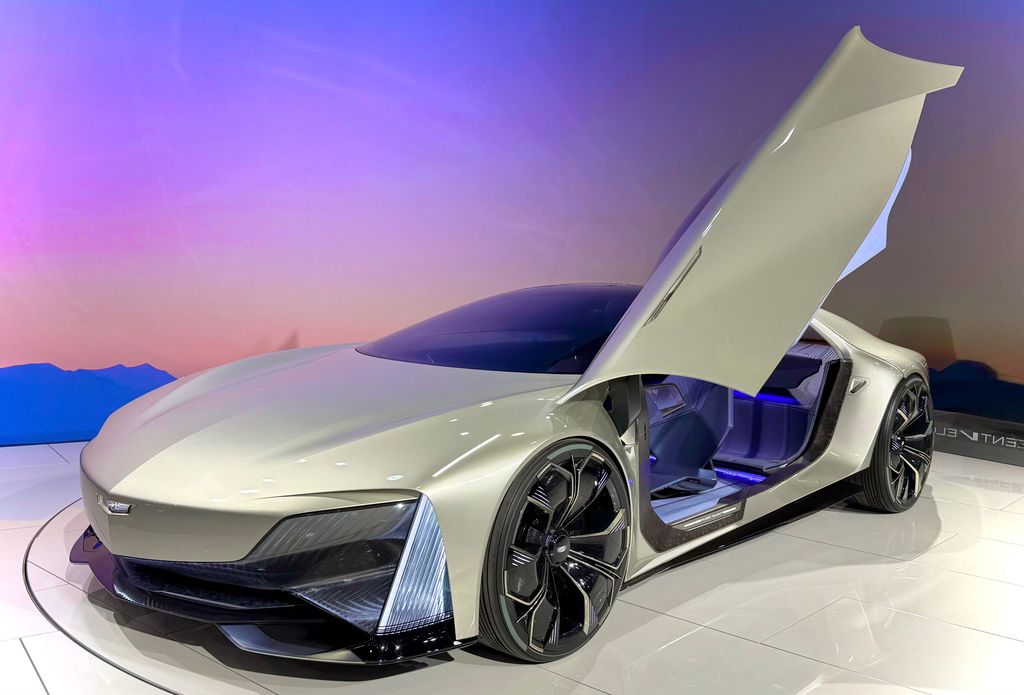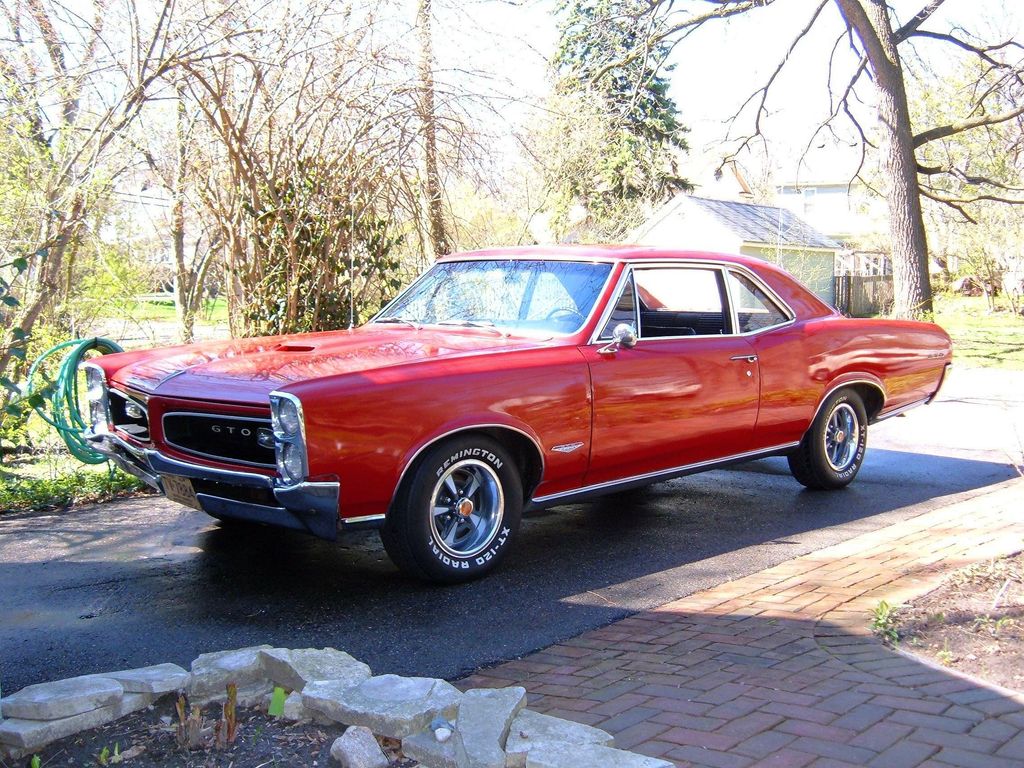Drag racing, my friends, is more than just a sport; it’s a primal scream of horsepower, a thunderous symphony played out on a quarter-mile stage where legends are born and, sometimes, regrettably, forgotten. For decades, the strip has been graced by magnificent machines, each one a testament to engineering prowess and raw, unadulterated speed. Yet, in the blazing dust and roar of the crowd, some of these titans, despite their significant contributions and undeniable prowess, have slipped through the cracks of collective memory. They were, and still are, incredible pieces of automotive history.
We’re talking about the silent gladiators, the unsung heroes of asphalt who once commanded respect with every launch and every gear change. While household names like the Mustang and Camaro soak up the limelight, a parallel universe of extraordinary drag machines exists, vehicles that pushed boundaries, shattered records, and etched their names (however faintly) into the very fabric of racing history. It’s an injustice, really, that these powerhouses haven’t received the perpetual roar of applause they truly deserve, their stories often overshadowed by shinier, more heavily marketed counterparts. Their engineering was as bold as their performance was breathtaking.
So, buckle up, because we’re about to embark on a high-octane journey, a deep dive into the archives of American automotive might. This isn’t just a list; it’s a pilgrimage to pay homage to ten forgotten drag cars that absolutely demand your attention. These aren’t mere relics; they are fire-breathing beasts that deserve a spot in the pantheon of automotive greatness, vehicles that, in their prime, were quite simply, phenomenal. Let’s dust off the rust, crank the ignition, and give these magnificent machines the recognition they’ve been patiently waiting for, because their stories are too good to stay hidden.
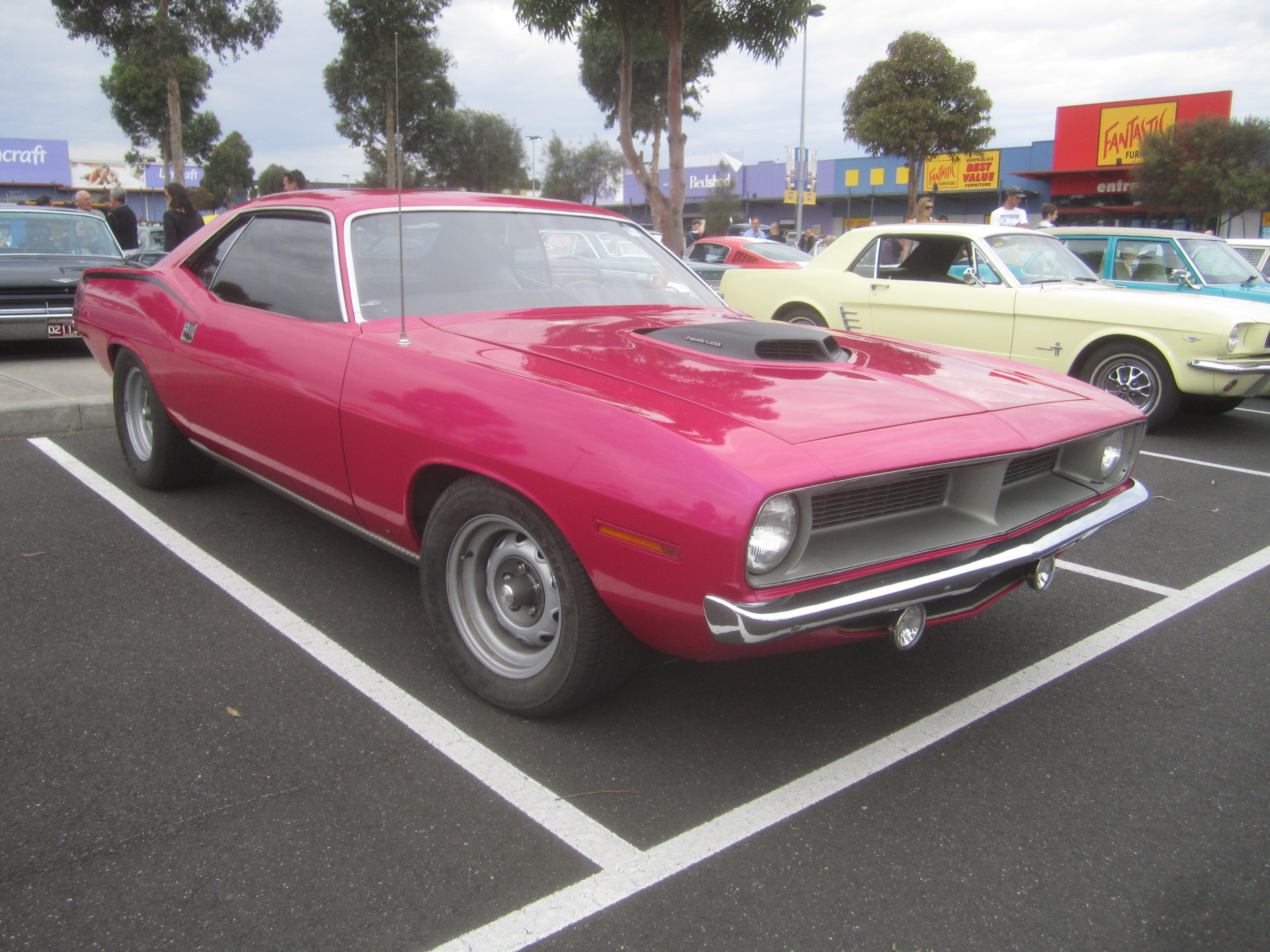
1. **Plymouth Barracuda Hemi Super Stock**Imagine the late 1960s, a time when horsepower was king and the drag strip was a battleground. Into this arena roared the Plymouth Barracuda Hemi Super Stock, a true force to be reckoned with. This wasn’t some ordinary street car dressed up for a weekend race; it was a purpose-built weapon. Fitted with the legendary 426 Hemi engine, it screamed performance from every fiber of its being, announcing its intentions with an unmistakable rumble.
This Barracuda was engineered from the ground up to conquer the quarter-mile. Its lightweight body, combined with that ferocious Hemi heart, created a power-to-weight ratio that made it a truly formidable opponent. Racers coveted the Barracuda because it wasn’t just fast; it was a statement. It effortlessly blended aggressive styling with uncompromised performance, truly a beautiful beast on the asphalt.
Despite its initial popularity and its incredible achievements on the strip, the Plymouth Barracuda Hemi Super Stock has, over time, been relegated to the shadows. It’s been overshadowed by other models, perhaps flashier or more enduring in the public eye. Yet, for those who know, this Hemi-powered marvel remains a quintessential piece of drag racing history, a testament to an era when raw power and daring engineering reigned supreme. Its legacy demands a modern appreciation.
Car Model Information: 1971 Plymouth Barracuda
Caption: 1970 Hardtop Coupe
Name: Plymouth Barracuda
Manufacturer: Plymouth (automobile)
Production: 1964–1974
Assembly: Fenton, Missouri,Hamtramck, Michigan,Maywood, California,Windsor, Ontario
Layout: Front-engine, rear-wheel drive layout
Class: Pony car
Categories: 1970s cars, All articles with dead external links, All articles with unsourced statements, Articles with dead external links from February 2018, Articles with dead external links from January 2022
Summary: The Plymouth Barracuda is a two-door pony car that was manufactured by Chrysler Corporation from 1964 through 1974 model years.
The first-generation Barracuda was based on the Chrysler A-body and was offered from 1964 until 1966. A two-door hardtop (no B-pillar) fastback design, it shared a great majority of parts and bodywork with the Plymouth Valiant, except for the distinctive wraparound rear glass.
The second-generation Barracuda, though still Valiant-based, was heavily redesigned. Built from 1967 through 1969, it was available as a two-door in fastback, notchback, and convertible versions.
The third generation, offered from 1970 until 1974, was based on the Chrysler E-body, exclusive to it, and the slightly larger Dodge Challenger. A completely new design, the two-door Barracuda was available in hardtop and convertible body styles.
Get more information about: Plymouth Barracuda
Buying a high-performing used car >>>
Brand: Plymouth Model: Barracuda
Price: $44,999 Mileage: 12,468 mi.
Read more about: Gone But Not Forgotten: Tracing the Legacy of 14 Iconic American Car Brands That Vanished from Dealerships

2. **Ford Thunderbolt**Stepping into the mid-sixties, we encounter another engineering marvel: the Ford Thunderbolt. This wasn’t just a car; it was a declaration. Built in a limited production run in 1964, the Thunderbolt was Ford’s answer to the burgeoning demand for factory-built drag racers. It took the humble Ford Fairlane as its base and transformed it into something truly monstrous, a machine designed for one purpose: winning races.
Under its hood lay a mighty 427 cubic inch V8 engine, a beast of an powerplant that, combined with numerous lightweight components, turned this Fairlane derivative into a formidable competitor. The Thunderbolt wasn’t just a participant; it was a pioneer. It set the stage for how manufacturers would approach specialized drag racing vehicles, proving that you didn’t just build a race car; you engineered a legend.
Its production run may have been short-lived, a mere blip on the timeline for some, but the impact of the Ford Thunderbolt reverberated throughout drag racing history. Its innovations and track dominance inspired a generation of racers and engineers. It stands as a significant part of drag racing’s golden age, a testament to Ford’s commitment to speed, and a car that, despite its rarity, continues to inspire awe among those lucky enough to witness its power.
Car Model Information: 1964 Ford Fairlane 500 Base
Name: Ford Fairlane Thunderbolt
Caption: Ford Fairlane Thunderbolt
Manufacturer: Ford Motor Company
ModelYears: 1964
Class: Muscle car
Assembly: Dearborn, MI
BodyStyle: sedan (automobile)
Layout: FR layout
Related: Mercury Cyclone
Wheelbase: 115.5 in
Abbr: on
Length: 197.5 in
Width: 72.5 in
Transmission: Cruise-O-Matic#MX.2FFX,manual transmission
Engine: {{convert,427,cuin,L,1,abbr=on,Ford FE engine#427
Weight: 3203 lb
Categories: All articles covered by WikiProject Wikify, All articles with bare URLs for citations, Articles covered by WikiProject Wikify from September 2022, Articles needing cleanup from September 2022, Articles with bare URLs for citations from September 2022
Summary: The Ford Fairlane Thunderbolt is a limited production, factory experimental, drag racing version of the Ford Fairlane produced during the 1964 model year only. A total of 100 units were produced; forty-nine 4-speeds and fifty-one automatics. A 4 speed secured the stick CLASS win at the US Nationals and secured the 1964 NHRA Super Stock championship for Ford.
Get more information about: Ford Fairlane Thunderbolt
Buying a high-performing used car >>>
Brand: Ford Model: Thunderbolt
Price: $43,500 Mileage: 83,618 mi.
Read more about: Your Ultimate Guide to the 8 Most Epic Superhero Movies Crashing Into Theaters in 2025!

3. **Chevrolet Biscayne Z11**In the early 1960s, Chevrolet unleashed a true rarity onto the drag racing scene: the Biscayne Z11. This wasn’t merely a high-performance trim; it was a factory lightweight car, an almost mythical creation designed to shed every ounce of unnecessary weight for pure, unadulterated speed. To say it was a gem is an understatement; it was a diamond forged for the quarter-mile.
The Z11 boasted a colossal 427 cubic inch V8 engine, but the real magic lay in its construction. Aluminum body panels replaced heavier steel, a meticulous detail that spoke volumes about its single-minded pursuit of victory. With only a handful of these cars ever produced, they have become incredibly sought after by collectors, more than just cars, they are artifacts of a daring era.
Despite its extreme rarity, the Chevrolet Biscayne Z11’s influence on drag racing cannot be overstated. It showcased how far manufacturers were willing to go to gain an edge, demonstrating a level of dedication to performance that was truly groundbreaking. This understated powerhouse, often unseen by the masses, left an indelible mark on the sport, proving that sometimes, the rarest beasts roar the loudest in history’s memory.
Car Model Information: 1962 Chevrolet Biscayne
Name: Chevrolet Biscayne
Caption: 1959 Chevrolet Biscayne 4-Door Sedan
Manufacturer: Chevrolet
Production: 1958–1975
ModelYears: 1958–1972 (US),1958–1975 (Canada)
Predecessor: Chevrolet 210
Successor: None
Class: Full-size
Platform: GM B platform
Layout: FR layout
Related: Chevrolet Del Ray,Chevrolet Bel Air,Chevrolet Impala,Chevrolet Caprice
Categories: 1960s cars, 1970s cars, All articles with unsourced statements, Articles with short description, Articles with unsourced statements from June 2022
Summary: The Chevrolet Biscayne was a series of full-size cars produced by the American manufacturer General Motors through its Chevrolet division between 1958 and 1975. Named after a show car displayed at the 1955 General Motors Motorama, the Biscayne was the least expensive model in the Chevrolet full-size car range (except the 1958-only Chevrolet Delray). The absence of most exterior and fancy interior trimmings remained through the life of the series, as the slightly costlier Chevrolet Bel Air offered more interior and exterior features at a price significantly lower than the top-of-the-line Impala and Caprice.
The Biscayne was named after Biscayne Bay, near Miami, Florida, following a trend by Chevrolet at the time to name cars after coastal cities or beaches such as the Bel Air and the later Chevrolet Malibu.
Get more information about: Chevrolet Biscayne
Buying a high-performing used car >>>
Brand: Chevrolet Model: Biscayne
Price: Not Priced Mileage: 0 mi.
Read more about: Illuminating Icons: A Deep Dive into 15 Classic Cars with the Most Jaw-Dropping Tail Light Designs
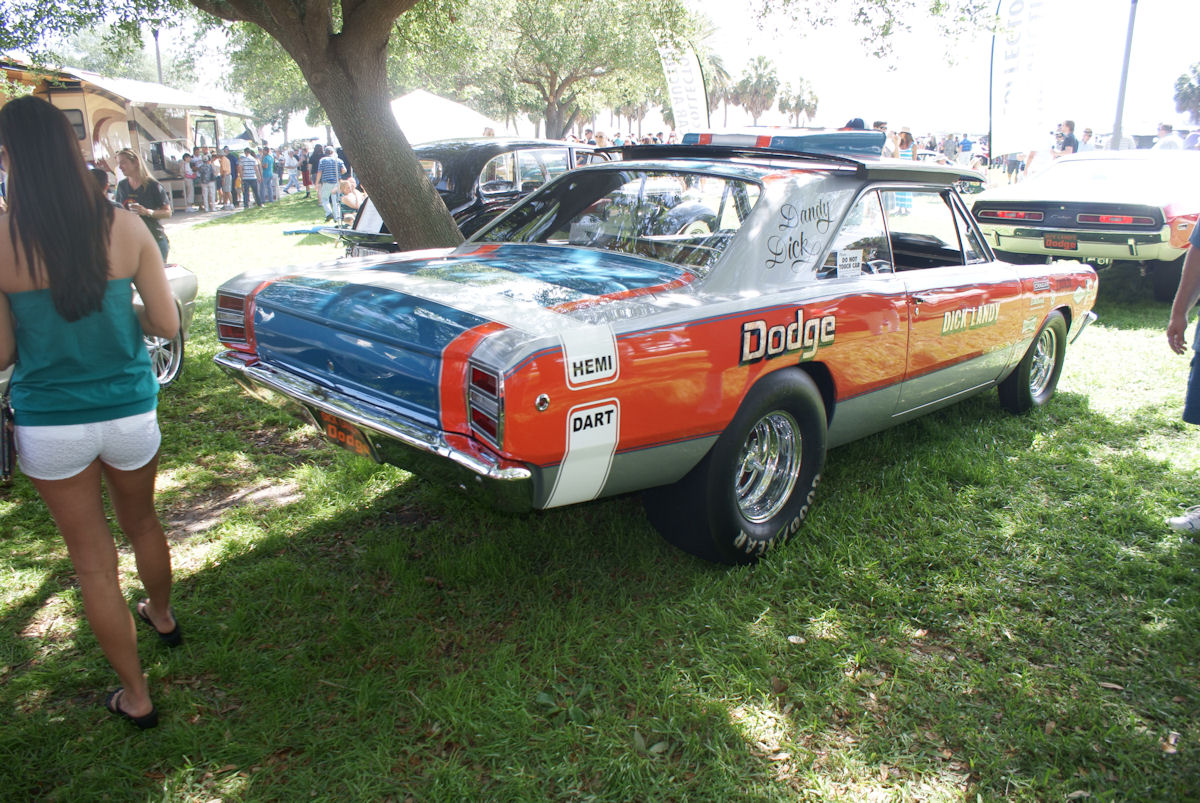
4. **Dodge Dart LO23**When we talk about drag strip legends, the Dodge Dart LO23 from the late 1960s demands a spot on the podium. This wasn’t just another performance car; it was a no-nonsense, pure-bred drag machine that made serious waves. Like a heavyweight boxer, it entered the ring with a singular focus: to dominate the competition, and it did so with brutal efficiency and remarkable consistency.
Under its rather unassuming hood lay the formidable 426 Hemi engine, coupled with a design philosophy centered entirely on lightweight performance. The Dart LO23 was a dominating presence on the track, feared and respected in equal measure. Racers loved it for its sheer simplicity and raw, untamed power, valuing its ability to get the job done without any unnecessary frills or aesthetic distractions.
Though it might have receded from the public limelight over the decades, the Dodge Dart LO23 remains a truly cherished piece of drag racing history. It embodies the essence of what a drag car should be: powerful, focused, and utterly uncompromising. Its story serves as a powerful reminder that sometimes, the most effective machines are those that strip away complexity in favor of pure, exhilarating performance, making it a genuine icon in the hearts of those who remember its might.
Car Model Information: 2015 Dodge Dart SXT
Name: Dodge Dart
Caption: 1966 Dodge Dart GT 2-door hardtop
Manufacturer: Dodge
Production: 1959–1976 (US market)
ModelYears: 1960–1976 (US market)
Class: Full-size
Layout: FR layout
Predecessor: Dodge Coronet#Fourth generation (1957–1959)
Related: Plymouth Valiant,Chrysler Valiant,Dodge Phoenix
Successor: Dodge Aspen,Dodge Diplomat,Talbot Tagora
Categories: 1970s cars, All articles with unsourced statements, Articles with short description, Articles with unsourced statements from December 2023, Articles with unsourced statements from May 2025
Summary: The Dodge Dart is a line of passenger cars produced by Dodge from the 1959 to 1976 model years in North America, with production extended to later years in various other markets.
The production Dodge Dart was introduced as a lower-priced full-size model in 1960 and 1961, but became a mid-size car for one model year for 1962, and was then reduced to a compact for two generations, from 1963 to 1976.
Chrysler had first used ‘Dart’ name plates on two Italian styled show cars, in 1956 and 1957, before it became a Dodge model name. The Dart nameplate was resurrected for a Fiat-derived compact car that was introduced in 2012.
Get more information about: Dodge Dart
Buying a high-performing used car >>>
Brand: Dodge Model: Dart
Price: $9,995 Mileage: 143,082 mi.

5. **Mercury Comet Cyclone**The Mercury Comet Cyclone, a vibrant player in the drag racing evolution of the 1960s, truly deserves a reappraisal. It was a vehicle that wasn’t just fast; it had style, an aggressive demeanor wrapped in a sleek design that hinted at the power lurking beneath. With an array of powerful engine options, it quickly established itself as a formidable competitor, making its presence known with authority.
This Cyclone wasn’t just a pretty face; it was a serious contender, particularly popular and successful in NHRA events. There, it consistently showcased its impressive speed and agility, leaving rivals in its dust and etching memorable performances into the minds of spectators. It proved that Mercury wasn’t just about luxury; they could build a proper performance machine that commanded respect on the asphalt.
Despite its undeniable success and significant contributions to the sport, the Mercury Comet Cyclone has since been eclipsed by other, perhaps more enduring, models. This is a crying shame, as its role in shaping drag racing during that dynamic era was pivotal. Its blend of sleek aesthetics and raw power makes it a truly special machine, a piece of history that continues to highlight Mercury’s undeniable, if sometimes overlooked, muscle car prowess. We should absolutely celebrate its impact and bring its legacy back to the forefront.
Car Model Information: 2017 Nissan Rogue SV
Name: Mercury (Comet) Cyclone
Caption: 1971 Mercury Cyclone GT
Manufacturer: Mercury (automobile)
ModelYears: 1964–1971
Class: Muscle car
Layout: FR layout
Predecessor: Mercury Comet
Successor: Mercury Cougar#Third generation (1974–1976)
Related: Mercury Comet,Ford Fairlane (Americas),Mercury Montego,Ford Torino Talladega
BodyStyle: coupe
Categories: 1970s cars, Articles with short description, Cars introduced in 1964, Commons category link from Wikidata, Coupés
Summary: The Mercury Cyclone is an automobile that was marketed by the Mercury division of Ford from 1964 to 1971. Introduced in 1964 as the Mercury Comet Cyclone, the Cyclone replaced the S-22 as the performance-oriented version of the Mercury Comet model line. The Cyclone became a distinct nameplate for the 1968 model year, as the Mercury Montego was phased in to replace the Comet.
Within Mercury, the Cyclone was positioned between the Cougar pony car and the Marquis/Marauder full-size two-doors. Though largely overshadowed by the Cougar, the Cyclone was positioned as a muscle car, representing the Mercury brand in racing as a clone of the Ford Fairlane Thunderbolt.
Four generations of the Cyclone were produced, with production ending after the 1971 model year. For the 1972 model year, the Cyclone returned as an option package for the Montego; only 30 examples were produced. Within the Mercury line, the Cyclone was not directly replaced. The Cougar XR7 was repackaged as a personal luxury version of the Montego for 1974.
Get more information about: Mercury Cyclone
Buying a high-performing used car >>>
Brand: Mercury Model: Comet Cyclone
Price: $12,247 Mileage: 64,705 mi.
Read more about: 16 Strange Muscle Cars That Deserve a Second Look

6. **Pontiac Tempest Super Duty**The early 1960s saw a magnificent, groundbreaking vehicle roar onto the scene that truly left an indelible mark on drag racing: the Pontiac Tempest Super Duty. This wasn’t merely a souped-up sedan; it was a revelation, a furious symphony of power featuring a potent 421 Super Duty engine and an array of innovative engineering solutions that truly set it apart from its competitors. Pontiac, traditionally known for blending performance with style, pushed the envelope spectacularly with this machine, crafting a truly special beast designed to dominate the quarter-mile.
What made the Tempest Super Duty such a standout was its audacious approach to factory-backed racing. Imagine, if you will, a car developed with meticulous attention to detail, shedding unnecessary weight and packing a punch that belied its unassuming exterior. It was a proper, purpose-built dragster straight from the showroom floor, shattering previous notions of what a family car manufacturer could achieve in the high-stakes world of sanctioned competition. This was raw engineering prowess unleashed for one glorious purpose: pure, unadulterated speed.
The innovative spirit extended beyond the engine bay. These Super Duty models featured lightweight body panels and specialized components that weren’t just modifications; they were declarations of intent. It was Pontiac effectively saying, “We’re here to win, and we’re bringing everything we’ve got.” This trailblazing philosophy fearlessly paved the way for future high-performance models, demonstrating just how far factory programs could go in creating dedicated racing machines, forever altering the landscape of automotive performance.
Despite its undeniable influence and the sheer audacity of its engineering, the Pontiac Tempest Super Duty has, regrettably, become something of a forgotten icon. Its scarcity and the fact that few were truly seen on public roads meant its widespread fame was curtailed, allowing its thunder to diminish over time. Yet, for those who appreciate the true roots of factory performance, this Pontiac remains a whispered legend, a story of daring to dream big that demands a modern appreciation.
Car Model Information: 1963 Pontiac Tempest
Name: Pontiac Tempest
Caption: 1967 Pontiac Tempest
Manufacturer: Pontiac (automobile)
Assembly: Pontiac Assembly,Pontiac, Michigan
Production: 1960–1970,1987–1991
Successor: Pontiac LeMans
Categories: 1960s cars, 1970s cars, 1980s cars, 1990s cars, All Wikipedia articles written in American English
Summary: The Pontiac Tempest is an automobile that was produced by Pontiac from 1960 to 1970, and again from 1987 to 1991.
The Tempest was introduced as an entry-level compact in October 1960 at the Paris Auto Show for the 1961 model year. Built on GM’s first unibody chassis, its new Y-platform was shared with the Buick Special/Skylark and Oldsmobile F-85/Cutlass.
While the Buick and Olds versions used a conventional drivetrain, the Pontiac had a unique, innovative design. The Tempest featured a front-engine/rear-transaxle layout that very nearly resulted in an ideal 50/50 weight distribution, together with independent rear suspension for nimble handling (a swing axle design similar to the Chevy Corvair). A Slant-4 engine connected to the 2-speed automatic transaxle via a flexible “rope” drive shaft. This configuration eliminated the driveshaft hump, yielding a flat floor with increased interior space. The Pontiac “Trophy-4” was also unique, created by basically halving a standard Pontiac V8 block.
Buick’s aluminum 215 V8 was also optional in 1961 and 1962, but very few Tempests were so equipped. The Tempest line offered an optional LeMans trim upgrade.
In 1964 the Tempest was redesigned as a mid-size car on the updated GM A-body platform, which used a conventional drivetrain. The base Tempest, Tempest Custom, and Lemans became separate trim packages, with an optional GTO performance option available on the LeMans for 1964 and 1965. The GTO was offered as a separate model line beginning in 1966. The Tempest name was retired after 1970, replaced by the T-37 as the base model, which in turn gave way to the LeMans name in 1972.
In Canada from 1987 to 1991, Pontiac marketed a rebadged version of the compact L-body Chevrolet Corsica under the revived Tempest name.
Get more information about: Pontiac Tempest
Buying a high-performing used car >>>
Brand: Pontiac Model: Tempest
Price: $9,750 Mileage: 0 mi.
Read more about: Legends of the Asphalt: A Deep Dive into America’s Most Influential Automotive Icons

7. **AMC AMX Super Stock**From the late 1960s emerged a compact powerhouse that defied conventions and made a serious impact in the drag racing world: the AMC AMX Super Stock. This limited-edition model, an almost rebellious entry from American Motors Corporation, wasn’t just another muscle car; it was a testament to tenacity and clever engineering. Known for its perfectly proportioned compact size and a truly potent engine, it proved that you didn’t need to be gargantuan to be a formidable contender on the track, offering a refreshing alternative to the era’s behemoths.
The Super Stock version of the AMX was purpose-built for NHRA competition, a weapon sharpened for the quarter-mile. Under its aggressive hood lay a mighty 390 cubic inch V8 engine that packed a serious punch, churning out horsepower that could make even the most seasoned racer sit up and take notice. Unlike many of its longer-wheelbase rivals, the AMX was a true two-seater muscle car, a unique beast alongside the Corvette, offering a tighter package and nimbler handling that racers absolutely adored. It was about raw, accessible power delivered with an aggressive stance and unwavering determination.
This wasn’t just a car that went fast; it looked the part too. With its bold, muscular design, aggressive stance, and a distinctly American flair, the AMX exuded presence. The wide-track look and fastback roofline gave it a unique aesthetic appeal, making it stand out in a crowd, even if that crowd was dominated by the era’s more famous names. It was a vehicle designed to catch the eye and then blow past you, a thrilling combination of style and genuine speed that challenged the status quo.
Yet, despite its impressive performance and a design that dared to be different, the AMX Super Stock’s star faded prematurely. AMC’s smaller budget and limited dealership reach struggled to give it the widespread recognition it deserved, and the company’s eventual collapse sadly took much of its legacy with it. Today, the AMX is a treasured rarity, a collector’s dream for those who understand its unique place in history, a true sleeper that’s finally gaining the respect it’s long deserved. It deserves a second, thunderous chance to showcase its distinctive blend of style, agility, and sheer, unadulterated grunt.
Read more about: Gone But Not Forgotten: Tracing the Legacy of 14 Iconic American Car Brands That Vanished from Dealerships
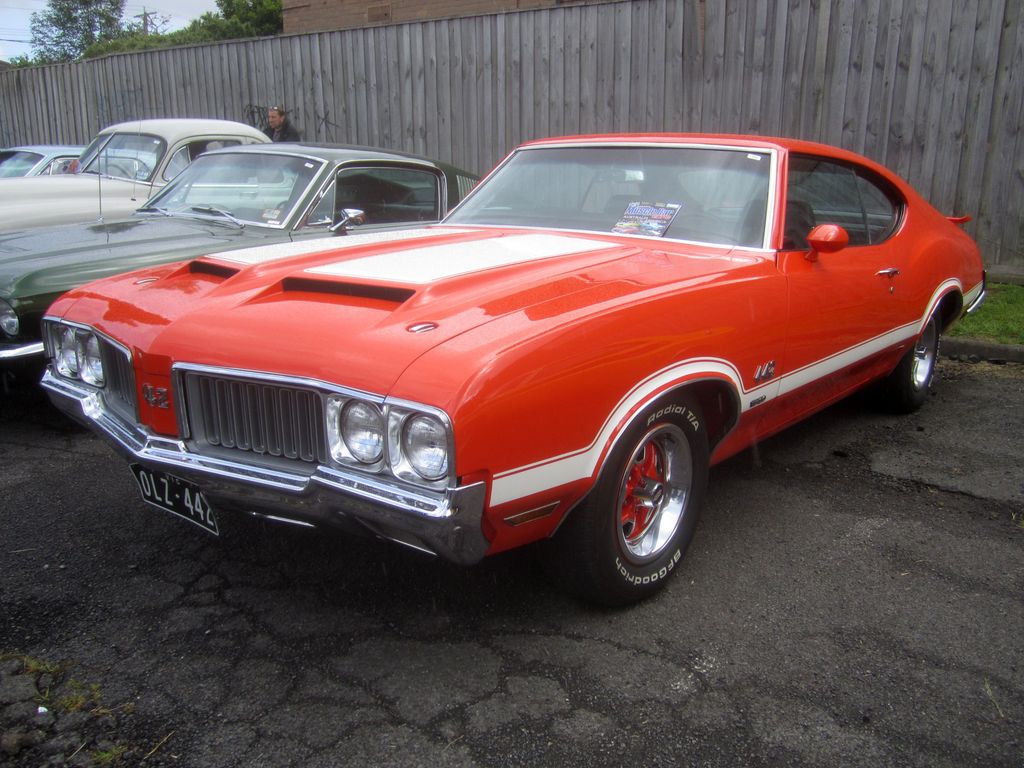
8. **Oldsmobile 442 W-30**The late 1960s and early 1970s brought forth a high-performance variant that truly dominated the drag strip with a potent mix of power and panache: the Oldsmobile 442 W-30. This wasn’t just a powerful car; it was a roaring declaration, known for its utterly potent engine and a distinctive design that screamed performance with a touch of sophistication. It became an instant favorite among muscle car enthusiasts, embodying the perfect balance between raw power and refined aesthetics, truly a gentleman’s bruiser.
Under its hood, the 442 W-30 typically roared to life with a colossal 455 cubic inch V8 engine, an absolute monster that, when coupled with its performance-enhancing components, made it a top-tier competitor. This wasn’t merely about straight-line speed; the W-30 package often included functional ram-air induction through scoops in the hood, special camshafts, and cylinder heads, all meticulously designed to maximize its quarter-mile prowess. This was Oldsmobile unequivocally showing the world that luxury and tire-shredding capability could indeed coexist in spectacular, harmonious fashion.
The 442 W-30 wasn’t just fast; it looked the part with an understated aggression. Its bold grilles, subtle badging, and often distinctive stripe packages hinted at the immense power lurking beneath without resorting to overt flamboyance. It was a muscle car that commanded respect not just with its acceleration, but with its confident, purposeful styling. This unique blend of aggressive intent and a surprising degree of elegance made it a compelling choice for those who desired both exhilaration and a measure of class, setting it apart from its more brutish competitors.
While its era of dominance was undeniably significant, the Oldsmobile 442 W-30 has, over time, been somewhat overshadowed by other, perhaps flashier, muscle car icons. Yet, its legacy undeniably lives on, revered by those who appreciate a muscle car that delivered exceptional performance without sacrificing its identity as an Oldsmobile. As the classic car market continues its insatiable quest for unique stories and understated power, the 442 W-30 stands poised for a well-deserved resurgence, ready to remind us all of its powerful impact.
Car Model Information: 1969 Oldsmobile 442
Name: Oldsmobile 442
Manufacturer: Oldsmobile
ModelYears: 1964–1980,1985–1987,1990–1991
Class: Muscle car
Layout: FR layout
Caption: 1971 Oldsmobile 442
Categories: 1960s cars, 1970s cars, 1980s cars, All articles with unsourced statements, Articles with short description
Summary: The Oldsmobile 4-4-2 is a muscle car produced by Oldsmobile between the 1964 and 1987 model years. Introduced as an option package for US-sold F-85 and Cutlass models, it became a model in its own right from 1968 to 1971, spawned the Hurst/Olds in 1968, then reverted to an option through the mid-1970s. The name was revived in the 1980s on the rear-wheel drive Cutlass Supreme and early 1990s as an option package for the new front-wheel drive Cutlass Calais.
The “4-4-2” name (pronounced “Four-four-two”) derives from the original car’s four-barrel carburetor, four-speed manual transmission, and dual exhausts. It was originally written “4-4-2” (with badging showing hyphens between the numerals), and remained hyphenated throughout Oldsmobile’s use of the designation. Beginning in 1965, the 4-4-2s standard transmission was a three-speed manual along with an optional two-speed automatic and four-speed manual, but were still badged as “4-4-2″s.
Because of this change, from 1965 on, according to Oldsmobile brochures and advertisements, the 4-4-2 designation referred to the 400 cubic inch engine, four-barrel carburetor, and dual exhausts. By 1968, badging was shortened to simply “442”, but Oldsmobile brochures and internal documents continued to use the “4-4-2” model designation.
Get more information about: Oldsmobile 442
Buying a high-performing used car >>>
Brand: Oldsmobile Model: 442
Price: $43,990 Mileage: 24,000 mi.
Read more about: Unleash the Beasts: 14 Legendary American Cars That Roared Through the 1960s, Forging an Unforgettable Automotive Decade
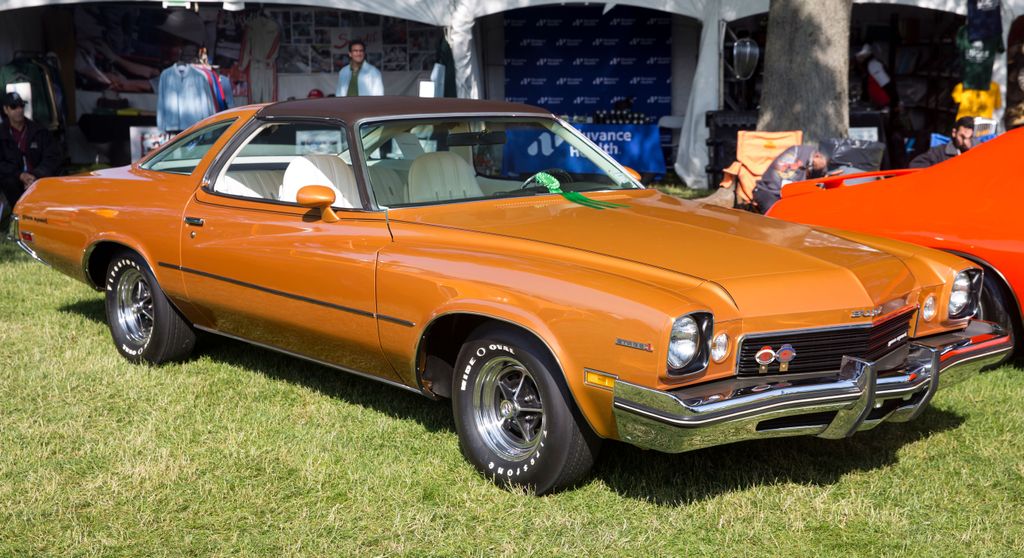
9. **Buick Gran Sport Stage 2**When we talk about rare and powerful models that left an indelible mark on drag racing history, the Buick Gran Sport Stage 2 demands a privileged mention. This wasn’t merely a fast car; it was a limited-production, factory-engineered drag weapon, designed with surgical precision to compete with the very best of its era. With a monstrous 455 cubic inch V8 engine, often equipped with special heads, camshafts, and an advanced performance carburetor, it was clear this Buick meant serious business on the asphalt.
The Stage 2 version of the Gran Sport was an absolute force to be reckoned with on the drag strip, a testament to Buick’s often-overlooked muscle car prowess. Imagine rolling up to the Christmas tree in a Buick, a brand more associated with plush comfort, only to unleash a tidal wave of torque that left most rivals gasping for air. These cars consistently delivered breathtaking performance, surprising many who stereotyped Buicks as staid luxury cruisers, effectively turning the automotive world on its head with their hidden ferocity.
This was the ultimate expression of Buick’s hidden performance pedigree, a magnificent beast wrapped in a subtly aggressive package that hinted at its immense capabilities. The Gran Sport line had always been about blending luxury with muscle, but the Stage 2 elevated it to an entirely new stratosphere. It proved that you didn’t have to choose between a comfortable ride and quarter-mile heroics; with a Stage 2, you got both, albeit in an incredibly rare and specialized package that makes it highly sought after today.
Despite its undeniable track prowess and groundbreaking engineering, the Buick Gran Sport Stage 2 suffered from extremely limited production numbers, making it a ghost in the annals of muscle car lore for many. Its rarity meant it wasn’t widely seen or aggressively marketed like its more mainstream counterparts, allowing its epic story to quietly slip into the shadows. Today, it remains a coveted piece of automotive history, a rare gem that’s more than ready for a proper revival, ready to roar back into the spotlight and showcase its legendary, understated might.
Car Model Information: 2017 Nissan Rogue SV
Name: Gran Sport
Logo: Buick gs emblem.png
Producttype: Performance car
Currentowner: General Motors
Producedby: General Motors
Introduced: [object Object]
Related: T-Type
Markets: U.S.
Categories: All Wikipedia articles in need of updating, All articles with unsourced statements, Articles with short description, Articles with unsourced statements from September 2020, Articles with unsourced statements from September 2025
Summary: The Gran Sport name has been used on several high-performance cars built by General Motors for its Buick brand since 1965. In the GM brands hierarchy, Buick was surpassed in luxury and comfort appointments only by Cadillac, which did not produce performance models. As a result, the Buick GS series were the most opulently equipped GM sport models of their era.
The Gran Sport performance enhancements on all Buick products during this era sought to affirm Buick’s tradition of producing powerful and comfortable products going back to the 1930s when all Buicks of the time were upgraded to the Buick Fireball Straight Eight, then installed the 278 cu in (4.6 L) Roadmaster engine in the shortest model Special and introduced the Century, known as “the banker’s hot rod” with a three speed synchromesh manual transmission. The Gran Sport sought to identify cars that were fun to drive with a luxury approach.
Get more information about: Buick Gran Sport
Buying a high-performing used car >>>
Brand: Buick Model: Gran Sport
Price: $12,247 Mileage: 64,705 mi.
Read more about: Buckle Up! We’re Ranking 12 Of George Barris’ Wildest Custom Car Creations That Defined an Era (and Blew Minds!)

10. **Studebaker Avanti R3**And now for something truly unique, an entry that stands apart with its innovative design and impressive performance: the Studebaker Avanti R3. This wasn’t just a drag car; it was a vision, a futuristic sculptured masterpiece that dared to challenge conventions, a bold final hurrah from a company on the brink. Equipped with a supercharged V8 engine, specifically the venerable R3, it was an absolutely formidable competitor during its time, proving that Studebaker, even in its twilight, could produce a machine with serious, eye-watering performance credentials.
The Avanti R3’s strikingly aerodynamic body and advanced engineering were truly ahead of their time, setting it apart from its more conventionally styled peers. It looked like nothing else on the road or the strip, a bold, sleek bullet designed to cheat the wind and conquer the quarter-mile with equal parts style and speed. This was a car that didn’t just perform; it made an artistic statement, blending avant-garde aesthetics with raw, supercharged power in a way few others dared, let alone succeeded. Its distinct style continues to be celebrated by a dedicated legion of enthusiasts.
Its supercharged engine was a marvel, generating impressive horsepower that belied its conservative manufacturer. This wasn’t just a big engine; it was a carefully crafted performance unit designed to squeeze every last ounce of speed out of the sleek Avanti platform. For a vehicle that some might have dismissed as merely a stylish grand tourer, the R3 package transformed it into a genuine street and strip warrior, capable of surprising much of the competition.
While it has, regrettably, faded into relative obscurity in the annals of drag racing, the Studebaker Avanti R3’s impact on the sport and its unique narrative remain compelling. Its limited production and the eventual demise of Studebaker meant its story wasn’t widely told, but its brilliance endures. It’s high time this stylish speed demon got its much-deserved second act, a testament to bold design, advanced engineering, and supercharged ambition. It deserves to be known and revered by a new generation of automotive aficionados.
So there you have it: ten forgotten drag cars that absolutely deserve to be remembered, cherished, and perhaps, even resurrected. These magnificent machines weren’t just fast; they were pivotal, pushing boundaries, shattering expectations, and inspiring generations of gearheads. Their stories are a vibrant tapestry woven into the fabric of automotive history, tales of innovation, raw power, and an unyielding pursuit of speed. It’s an injustice that they’ve been relegated to the shadows, their thunderous roars softened to mere whispers.
Car Model Information: 2017 Nissan Rogue SV
Name: Studebaker Avanti
Caption: 1963 Studebaker Avanti
Manufacturer: Studebaker
Aka: Avanti
Production: 1962: 1,200;
Assembly: Studebaker Corporation#Studebaker Factories,South Bend, Indiana
Predecessor: Studebaker Gran Turismo Hawk
Class: Personal luxury car
BodyStyle: coupe
Layout: FR layout
Engine: 289 CID
Abbr: on
Transmission: Manual transmission
Wheelbase: 109 in
Length: 192.4 in
Width: 70.3 in
Height: 53.8 in
Weight: 3095 lb
Related: Studebaker Lark
Designer: Raymond Loewy#Avanti
Categories: All articles with incomplete citations, Articles with incomplete citations from September 2018, Articles with short description, CS1 errors: missing title, Cars discontinued in 1963
Summary: The Studebaker Avanti is a personal luxury coupe manufactured and marketed by Studebaker Corporation between June 1962 and December 1963. A halo car for the maker, it was marketed as “America’s only four-passenger high-performance personal car.”
Described as “one of the more significant milestones of the postwar industry”, the Raymond Loewy-designed car offered safety features and high-speed performance. Called “the fastest production car in the world” upon its introduction, a modified Avanti reached over 170 mph (270 km/h) with its supercharged 289-cubic-inch (4,740 cm3) R3 engine at the Bonneville Salt Flats. In all, it broke 29 world speed records at the Bonneville Salt Flats.
Following Studebaker’s discontinuation of the model, a succession of five ventures manufactured and marketed derivatives of the Avanti model through 2006. These ventures licensed intellectual property and, in some cases procured parts, through arrangements with the successors to the Studebaker assets.
Get more information about: Studebaker Avanti
Buying a high-performing used car >>>
Brand: Studebaker Model: Avanti R3
Price: $12,247 Mileage: 64,705 mi.
Read more about: 16 Strange Muscle Cars That Deserve a Second Look
In a world increasingly captivated by instant gratification and relentless novelty, taking a moment to appreciate these unsung heroes is more vital than ever. They remind us that true greatness isn’t always found in the brightest spotlight, but often in the audacious engineering and bold spirit that defined an era. Let’s not just remember them; let’s celebrate them, ensuring that the legacy of these incredible drag machines, these true titans of the quarter-mile, echoes loudly for generations to come. They’ve waited long enough; it’s time for their triumphant return.

